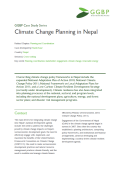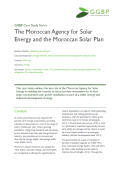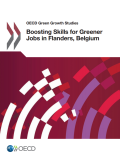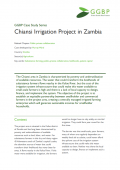
Overarching climate change policy frameworks in Nepal include the expanded National Adaptation Plan of Action 2010; National Climate Change Policy 2011; National Framework on Local Adaptation Plans for Action 2011; and a Low Carbon Climate Resilient Development Strategy (currently under development). Climate resilience has also been integrated into planning processes...

This case study outlines the key role of the Moroccan Agency for Solar Energy in enabling the country to attract private investment for its first large concentrated solar power installation as part of a wider energy and industrial development strategy.

The transition to a low-carbon, resource efficient and green economy can only be made by developing the right skills, knowledge, and competencies. Such skills can be defined as “the knowledge, abilities, values and attitudes needed to live in, develop and support a sustainable and resource-efficient society”. In countries that rely...

The Chiansi area in Zambia is characterised by poverty and underutilization of available resources. The water that could transform the livelihoods of subsistence farmers flows nearby in the Kafue River, but the cost of the irrigation system infrastructure that could make this water available to small-scale farmers is high and...
Iowa continues to be a largely rural state dominated by agriculture and associated industries, and is the largest producer of corn in the US. Its strengths in the renewable energy sector are abundant land, specialisation in the intensive production of corn for energy, and a good wind resource, combined with...
Maine and Vermont have high energy costs and no fossil fuel resources, which have led to the early development of renewable energy, including hydroelectric energy generation. Maine’s renewable energy policies and associated funding have been largely focused on wind energy generation and developing projects while Vermont has chosen instead to...
Oregon covers a vast territory that is well endowed with natural resources, supporting early specialisation in the energy sector. This case study has a specific focus on Wallowa County, which is a predominantly rural region at the eastern edge of the state. Renewable energy policy in Wallowa County has aimed...
Tennessee’s rivers have helped make it one of the top hydroelectric power producers east of the Rocky Mountains, with many hydroelectric power plants located along the Cumberland and Tennessee River systems. It is also a major nuclear power producer. In Tennessee the best opportunity for expanding employment from renewable energy...
China's consumption of the world's resources is reaching crisis levels. Unchecked, such levels of consumption and waste would strain the nation and the planet. To prevent the worst scenario, the country is taking action. For the past decade, China has led the world in promoting the recirculation of waste materials...
Renewable energy together with energy efficiency, sustainable transport, sustainable agriculture, sustainable tourism, green building and waste management are economic sectors which are often considered capable of paving the way for a transition to a green economy and providing win-win solutions offering job creation, poverty alleviation and environmental protection. However, there...
